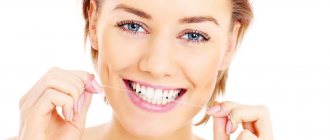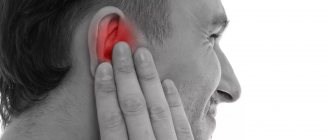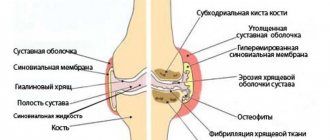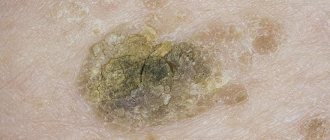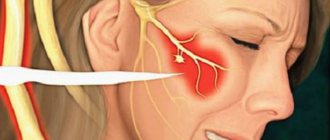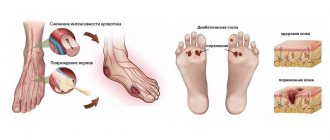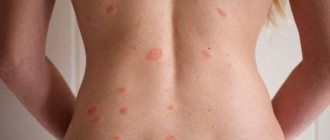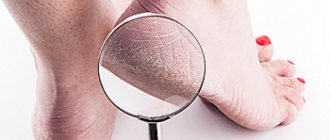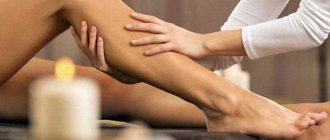Hello dear readers of my blog! Have you ever had a callus? Do you know how to treat it correctly? Recently I myself encountered a similar problem, which I want to tell you about. How to treat a callus on the foot is the topic of today’s article.
If you also had a callus, then you can imagine what pain and discomfort it is when walking.
Plus, the rod growth also has a deep root, which is why it gets its name.
Since due to such an illness I even had to see a doctor, I went all the way from folk recipes to professional help.
Therefore, I suggest you find out today whether it is possible to treat calluses with a core at home, and what they do for this.
Features of the problem
A callus with a core has smooth and clear edges, as well as a yellowish-flesh color. Quite often it is called ingrown.
This type of skin growth is considered the most difficult and unpleasant to treat. The callus grows deep into the subcutaneous tissue, causing severe pain. Many dermatologists consider callus to be a type of hard callus and a late stage of its development. A dense rod, which looks like cartilage, is formed due to rapid cell division.
When you press on a callus with a rod, a very strong dull pain occurs, as the nerve fibers are compressed.
What is a callus with a core?
One of the functions of the skin is protective. Seals made of horn cells protect deeper layers from damage during prolonged mechanical loads. For example, such new formations are to some extent useful for guitarists, violinists, and weightlifters. In other cases, keratinized, roughened areas provoke the formation of dry calluses. Their worst variety is core (internal, ingrown).
The neoplasms are round with a clear contour, smooth edges, yellowish in color, and small in size. Core callus gets its name from the central shaft that grows into the tissue. It is dense, painful when pressed, and has a small depression with a “plug” in the center. Calluses occur in areas of intense friction or compression of the skin. Its features:
- A difficult to treat variety with the most unpleasant symptoms. The growth does not form like a normal keratinized thickening, but grows into the deeper layers of the skin, causing severe pain.
- Dermatologists consider the growth with a shaft as the last stage of development of a dry callus.
- It differs from hard tissue by the presence of a cone-shaped, dense, cartilage-like internal rod that grows into the dermis. It is a consequence of hyperkeratosis (abnormally rapid cell division in an area of increased mechanical stress).
- When pressing, pain always occurs (intense, dull), resulting from compression of the nerve endings between the rod and the bone protrusions.
Causes
The main physiological reason for the formation of internal calluses is frequent, prolonged pressure on soft tissues. Provoke increased stress on the skin:
- Long-term wearing of narrow, hard, uncomfortable shoes, high-heeled shoes, boots with thin soles.
- Entry of a foreign body (grains of sand, shavings, small glass, splinters, other hard materials). Long-term injury to the area occurs, and the process of tissue compaction accelerates.
- The presence of old dry callus, moving into the final stage - the formation of an internal core.
- Specifics of physical exercise or professional activity:
- prolonged vertical load on the feet (athletes, loaders);
- work without gloves with hand tools (blacksmiths, carpenters, joiners);
- playing stringed musical instruments (violinists, guitarists);
- physical activity using sports equipment that causes friction on the palms and hands (horizontal bar, barbell, parallel bars);
- walking barefoot for a long time (for rural residents).
There are many factors that cause excessive pressure on certain areas of the skin. These include:
- large body weight;
- flat feet;
- viral, fungal infection;
- damage by parasitic insects (for example, scabies mite);
- skin diseases (for example, psoriasis);
- hyperkeratoses;
- age (the layer of fatty tissue in older people gradually decreases);
- hypovitaminosis (lack of vitamins);
- diabetes;
- joint inflammation;
- deformation of the toes.
Clinical picture
Individual (protruding) areas of the skin on the feet and hands experience increased mechanical stress. These are the main locations of callus localization:
- sole;
- spaces between the first and second, fourth and fifth toes;
- heel center;
- palms;
- phalanges of fingers.
A callus with a core develops gradually. Signs of its formation:
- Slight discomfort, redness of the affected area, itching, tingling are signs of the initial stage.
- The appearance of a round, convex area with a small hole in the center (an external sign of the presence of a rod) is a sign of a progressive stage.
The callus differs from the usual dry callus in its pronounced symptoms. These include:
- severe pain when pressing, walking;
- gait disturbance (when positioned on the heel, between the toes);
- redness;
- change in skin pattern;
- swelling of the affected area.
Causes
The main reasons for the formation of calluses with a core are:
- wearing tight or uncomfortable shoes;
- ignoring the presence of ordinary dry calluses;
- presence of a foreign object lodged under the skin;
- presence of fungi or viruses;
- improper hygiene measures.
When wearing shoes that cause discomfort, prolonged rubbing of the feet and toes occurs. If it is made of low-quality materials, it can not only cause intense friction, but also cause infection.
If you ignore the presence of dry callus and do not treat it in a timely manner, further coarsening of the skin layers occurs, which leads to the formation of a dense core. If small objects, such as a grain of sand, a splinter or small pebbles, get under the skin and remain in the deep layers of the skin for a long time, the dermis is gradually injured and a dry callus appears.
The treatment of dry calluses with a core is quite difficult, and it takes a lot of time to completely get rid of them. Often the only way to fix this problem is to remove it completely. However, there are also less radical methods of therapy.
Symptoms
The development of callus occurs gradually. At first, the person does not feel obvious discomfort. The area of constant friction turns slightly red. The cells slowly die and a keratinized area appears. As the root grows, a slight tingling and itching is disturbing.
The formed dense growth with a cap causes great concern. When walking there is a sharp pain. When you feel the round growth, you can feel a burning sensation. Every day it becomes more difficult to move. A person begins to limp because he tries not to step on his sore leg with full force. Sometimes the area around the callus becomes swollen, swollen and red.
Softening the top layer and removing it with pumice rarely solves the problem. The root remains inside, so the leg continues to hurt. It is difficult to remove callus. This requires a lot of time and effort.
Main symptoms
The presence of a dry callus with a core can be determined by the following signs:
- unpleasant and painful sensations are observed;
- often growths form near the thumb or little finger;
- An ingrown callus greatly interferes with a person’s ability to walk normally.
At the initial stage of the appearance of such corns, a person feels a slight tingling in the area of their formation. The injured area itches quite often.
Similar symptoms are also typical for ordinary calluses, but if they are core calluses, then when the stratum corneum is removed, you can see the root, which looks like a small dark spot and remains in place. This rod causes pain when moving. For this reason, removing dry calluses with a core is a rather complicated procedure.
Carrying out diagnostics
Before starting treatment, it is necessary to diagnose and determine the nature of such an abnormal growth as accurately as possible, so a correctly made diagnosis will help determine the program for future therapy. Usually, a dermatologist is visually able to determine the type of callus based on its appearance alone. You can confuse a callus with a wart, but there are some differences between them. Growth with a rod inside:
- does not bleed even with strong pressure;
- formed as a separate node;
- There is a small depression in the center.
It is important to conduct a comprehensive diagnosis, which includes blood tests:
- on sugar levels;
- glycated hemoglobin content;
- antibody titers to the HIV virus.
Only after diagnosis the doctor selects the necessary treatment.
Features of treatment
It is very important to know how to treat a callus with a core, since incorrect treatment methods can cause complications. Self-removal can be carried out only in the initial stages, when the formation has not yet grown deep into the soft tissue and its root is not too deep. At the same time, you should be prepared for the fact that the treatment process takes quite a lot of time and patience.
However, if the callus has already grown too much into the soft tissue surrounding the rod, then you should not try to remove it yourself. It is better to seek help from a doctor, otherwise you can cause significant harm to the body.
Anti-inflammatory and antifungal agents are used to remove callus. Basically, these are ointments that remove the causative agent of the disease and additionally prevent its formation.
Treatment depending on location
The easiest way to treat a callus on the foot. In this case, there are practically no restrictions when choosing methods.
If the callus is located on the little finger, there are certain difficulties, since it is more difficult to fix the patch on it, and not all surgical methods of removal are allowed.
If the subcutaneous callus is located between the fingers, then it is especially difficult to deal with it. In this case, surgical removal in a clinic or the use of improvised means in the form of various phytotherapeutic recipes is indicated.
In the first case, we are talking about cryodestruction, that is, the formation on the toe is destroyed by exposure to liquid nitrogen. Under its influence, after several sessions, the rod and ingrown cap fall off on their own. The whole procedure takes little time, after which you can immediately return to your normal rhythm of life. You cannot try to cut it off yourself. This will only injure the callus.
There are home methods that are suitable for treating both interdigital formation and similar problems on the foot. In addition to classic baths, compresses based on aloe leaves are used. It is more convenient to fix them between the fingers, where they act as a plaster. A hard-to-reach place can be lubricated with a mixture of propolis in alcohol and various essential oils, covering it with a bandage.
Drug treatment
Answering the question of how to treat a callus with a shaft on the foot, it must be said that medications help a lot, but they can only be used after consultation with the treating doctor. They will help you fix the problem at home.
Before using any product to treat calluses, it is important to steam and soften the skin. It is important to ensure that no infection gets into the open wound, and it is also important to completely remove the entire rod.
For home use, liquids and gels that freeze the formation, as well as callus plasters, are suitable. The main active ingredient of gels and liquids is salicylic acid. To avoid damaging healthy areas, it is important to strictly follow the instructions and precautions.
To remove dry calluses with a core, you can use Nemozol cream. You need to apply it directly to the affected area using a cotton swab, and then cover the treated area with a band-aid. After 2 days, remove it and remove the exfoliated skin. If necessary, repeat the procedure until the result is achieved.
A callus with a shaft on the foot can be removed using Super Antimozolin ointment. You need to apply this product thickly to the keratinized area and cover with a band-aid or cloth. If possible, keep warm, but do not heat it. After 2 hours, remove the skin and repeat the procedure.
Stop Corn liquid helps a lot. It should be applied to the steamed problem area 2-3 times a day, and then lightly cleaned with a pumice stone.
You can use a corn patch with a stick. This is a modern and quite effective tool. Its action is based on salicylic acid, as well as many other natural ingredients that enhance their effect. If the skin is damaged, you should not use this patch.
A good remedy is a patch for calluses with a “Salipod” rod. It is impregnated with salicylic acid, sulfur and other components. In order for this product to have an effective effect, here are the basic rules for using the patch:
- wash the area with the callus, pat dry with a towel;
- wipe the well-treated area with alcohol to remove excess fat;
- cut off a piece of plaster similar in size to the problem area;
- remove the film and stick to the affected area;
- secure it on top with a bandage or simply stick a bandage on it.
The course of therapy with a patch ranges from 2 days to 2 weeks, it all depends on the depth of the rod. It is contraindicated to apply to healthy skin; it cannot be used during pregnancy, or together with medications for diabetes and cancer.
You can use combination products that contain several acids at once, as well as natural ingredients. They are mainly used for old calluses. To enhance the effect, they are used as compresses after steaming the skin. Here are a few such tools:
- "Mozolin."
- "Green Pharmacy"
- "Bensalitin."
It is possible to eliminate callus with the help of such means only if they are used for a long time and regularly.
Recommendations from experts
You need to understand that the choice of one or another method of getting rid of core calluses on the skin of the feet is determined by the severity of the condition. Of course, if the callus is shallow and does not cause unpleasant sensations in the form of severe pain, then you can use traditional methods. If mild pain occurs, you need to start using pharmaceutical emollients.
If a callus causes pain from the very beginning of its formation and creates difficulties when walking, then you should immediately seek the help of professionals. Removing such formations using hardware pedicure, laser or cryodestruction will allow you to get rid of unpleasant symptoms in one procedure. Just after the procedure, do not forget to use anti-inflammatory ointments for several days to consolidate the effect.
In the case when the wrong treatment is started and a person tries to get rid of a deep callus at home, this can lead to a worsening of the condition.
In this case, medical assistance may be needed, including surgery. If you have any doubts regarding the choice of method for correcting calluses on the feet, you should consult a specialist - a dermatologist or cosmetologist. He will advise you on the most appropriate way to remove the callus.
Traditional methods
Many people are looking for ways to remove corns with a core using folk remedies. For this it is recommended to use baths.
A bath with soap and soda has worked well. If the stem of the growth is not too long, then this remedy will help quickly remove the callus. You need to dilute 1 tbsp in hot water. l. soda and the same amount of grated soap. Use the hand or foot bath for 30 minutes. Then rub the callus with a pumice stone. 5-10 procedures will be required.
You can use a mustard bath. To do this, dissolve natural dry mustard powder in hot water. Carry out the procedure for 30 minutes, and then rub the growth with pumice. More than 5 procedures will be required.
Propolis can be used to remove calluses. Steam the growth. Melt a little lard with propolis and form a ball. Mash it into a cake and apply it to the callus. Secure with a bandage and leave until the morning.
Before the procedure, steam your hands or feet (depending on where the callus is located) and wipe dry. Soak the medicinal patch with salicylic acid and propolis, stick it on the growth and walk with it for 2 days.
When treating calluses with a core with a remedy such as vinegar, you need to take a regular patch, apply vinegar essence to it, which needs to be diluted a little with water. Stick it on the growth, walk all day, then take it off at night, and in the morning stick the patch with vinegar again.
Take onion and garlic in equal proportions and prepare a paste from them. Apply it to the steamed formation, and make a bandage on top. To completely get rid of a callus with a core, approximately 10 such procedures will be required.
At night, apply a compress made from finely grated potatoes and onions. Wrap the resulting mixture in gauze and apply to the callus. Wrap the top with plastic wrap. Keep the compress on all night. In the morning, remove the formation and spread with rich cream.
Before using any of these remedies, you should consult a doctor so as not to harm yourself.
How to treat a callus on the foot - folk remedies
You can try various traditional medicine recipes if the growth on the finger or sole is not very bad. Use natural ingredients:
- You can make a compress from aloe leaves. To do this, the leaf is cut and the pulp is applied to the sore spot. By morning the corns will become soft;
- Celandine juice is used to remove calluses. Before using it, the affected area should be steamed well;
- if the growth is small, then try onion or garlic gruel;
- A good way to treat with propolis.
Try a compress of tea tree oil, honey and grated radish. All components are mixed and distributed on the affected area. A good remedy made from onion peels and vinegar.
This mixture is infused for about two weeks. Then Vaseline is applied to the affected area, and the composition is applied on top.
Self-removal of callus
Before completely removing the callus with the shaft, it needs to be steamed a little. To do this, immerse your feet in a hot bath with mustard powder (you can replace it with soda or liquid soap). After 10 minutes, the dense top layer will steam and can be easily removed with nail scissors. After removal, the core of the callus will be visible. This is its root, which will return again without removal.
Carefully drop citric acid into the remaining rod. If desired, it can be replaced with celandine juice or vinegar. Then cover the wound with a plaster.
You can buy patches in pharmacies that help remove calluses. You need to stick the patch on the growth and leave it for the time specified in the instructions. Then remove the patch and cut off the upper softened part of the skin with scissors. Then remove the rod with tweezers. Pour iodine into the wound and tie it tightly. Sometimes you cannot remove the rod yourself. In this case, you need to apply a special patch until the rod comes out on its own.
Forecast
Callus is a condition that can be cured much better if treatment is started as early as possible. If pharmacy or non-traditional local remedies do not help, then you can remove the growth if you promptly contact a specialist who will select the optimal physiotherapeutic or surgical method of treatment. It is important to take into account all the features of the callus, namely its size, area of localization, and severity of symptoms.
You should not delay removing the core growth, since at an early stage you can get rid of it permanently quite quickly, without resorting to the help of specialists. With proper and timely treatment, the prognosis is generally positive.
Sources of education
The cause of calluses is primarily the wearing of tight shoes or prolonged walking in high heels. In this case, the foot takes on increased loads. After all, compression or displacement of the center of gravity occurs.
As a result, calluses form on the skin. They are easily removed with timely treatment. But if the corns become old, it is not so easy to deal with them. It can take quite a long time to remove calluses on your feet.
In addition to this main reason for the occurrence of this formation, there are other reasons:
- Skin injury (splinters, wounds). An infection or foreign object is introduced inside. At the same time, the body tries to “fence itself off” from external influences. It creates a barrier by forming hard tissue. The latter are transformed into a callus core.
- Fungal diseases.
- Transition of an ordinary callus into a keratinized one. This picture is observed if, after the fresh formation has dried, it is not removed. Constant exposure to the external irritant that caused the callus (for example, pressure or friction) leads to the formation of a core.
Possible complications
If the callus is not completely cured, it grows deeper over time, causing the following complications:
- causes severe pain;
- leads to a decrease or even loss of performance;
- provokes the formation of deep cracks;
- provokes tissue decay during infection.
In addition, the presence of a callus with a core can disrupt the normal redistribution of weight on the leg muscles, joints, and nerve nodes during movement, which leads to inflammatory processes and deformation of the joints and muscle tissue.
Carrying out prevention
It is important not only to know how to remove a callus with a core, but also how to prevent its occurrence. Doctors say that following certain rules will help protect against the occurrence of unpleasant pathologies. The main means of prevention is maintaining good personal hygiene. To do this you need:
- wear clean and dry shoes;
- try to wear socks made of natural materials and regularly monitor their cleanliness;
- after a shower, it is good to clean the keratinized area with a pumice stone, and then apply a moisturizer;
- wear comfortable shoes made from natural materials.
If core calluses form quite often, then a consultation with an orthopedic doctor is required. Perhaps the reason for the formation of such growths is the incorrect position of the foot. Special insoles prescribed by an orthopedist will help solve this problem.
In any case, treatment will be faster and more successful if it is started immediately. You should not allow further ingrowth or spread of the callus. If a rod has formed, you need to consult a specialist.
Preventive measures
Feet care
A few simple rules will help minimize the risk of callous formations if you follow them systematically:
- Keep your feet clean. Pathogenic fungal microflora often appears in people who do not take care of personal hygiene, penetrating the body at the slightest scratch or the slightest damage to the skin, along with other pathogenic infections and bacteria.
- Wear comfortable shoes. This rule should be followed to avoid many foot problems, including the appearance of calluses on the feet or other areas. Wearing comfortable shoes made from natural materials with flat soles or small, stable heels will help maintain health and prevent the appearance of tumors.
- Don't start the disease. If a small blister or other visible signs of skin damage are observed, the affected area should be treated with antiseptic drugs and covered with a sterile plaster. This will help avoid suppuration, infection and other problems.
- Disinfection of care instruments. All nail and foot care tools must be clean and regularly treated with antiseptics.

